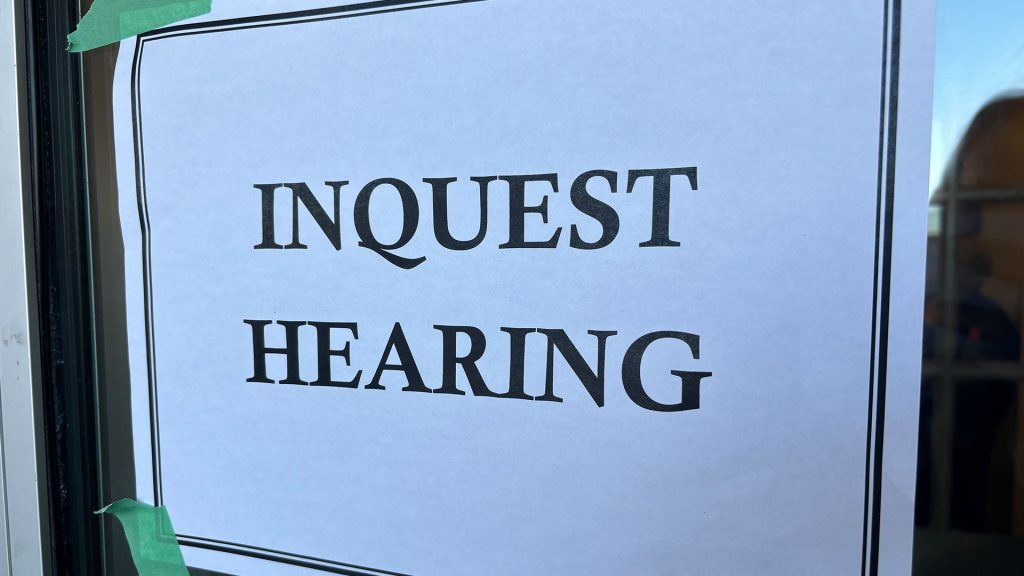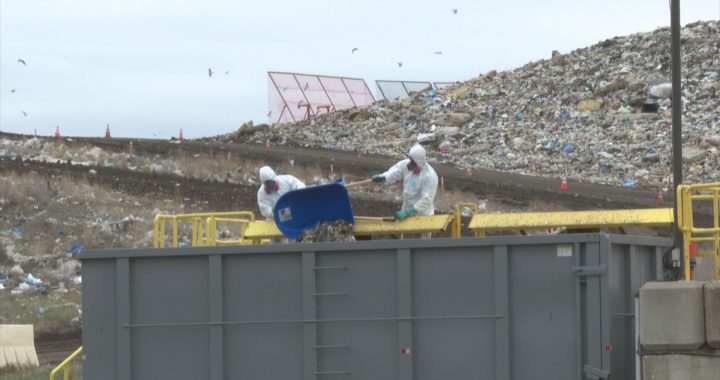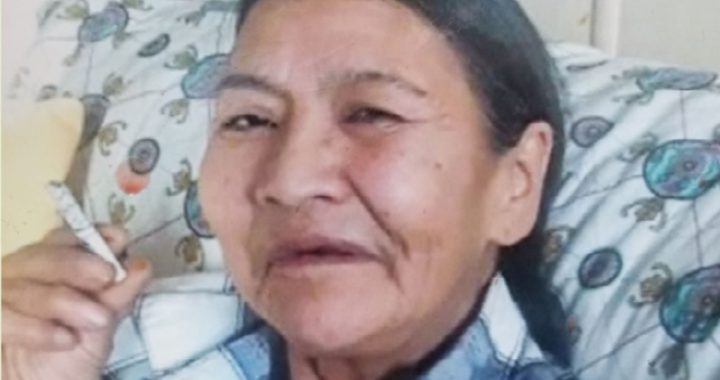
A sign for the coroner's inquest currently underway in Whitehorse. Photo: APTN News
Shelter staff who placed a First Nations woman on her stomach on the night she died now say it was not the best position to have placed her in.
Darla Skookum, 52, a citizen of the Little Salmon/Carmacks First Nation, died in April 2023 after staff at the Whitehorse emergency shelter put her to bed lying face down on her stomach.
Her death, along with three other First Nations women, is the focus of an inquest underway this month.
The three staff members who helped Skookum to bed the night of her death testified last week. Their names are protected by a publication ban.
One of the staff members said he placed Skookum on her stomach with her face to side. But it was not until reviewing video footage that he noticed Skookum’s face was in her pillow.
He said leaving Skookum on her stomach was “not the best position to have left her.”
“We are quite sorry in that respect,” he said.
Earlier in the week, pathologist Dr. Elizabeth McKinnion confirmed Skookum died from acute alcohol toxicity with contributions from cocaine and hydromorphone.
Her autopsy also showed she had serious underlying medical conditions, including cirrhosis of the liver and nephron sclerosis of the kidneys.
Video footage in the hours leading up to Skookum’s death shows her sitting in a lounge, seemingly unconscious or sleeping at one point and unable to stand or walk.
Staff members testified in the hours leading up to Skookum’s death she appeared to be intoxicated. After placing her in a wheelchair, Skookum was taken to an overflow sleeping room.
It was there staff placed Skookum, who appeared to be unconscious, on her stomach on a sleeping mat with her head in her pillow. Video footage shows Skookum never moved again after being placed on the mat.
Her body was found by another staff member the next morning. She was pronounced dead at the scene shortly after.
Staff members who placed Skookum on the mat testified while she appeared to be intoxicated, she was breathing and responded to a touch on her shoulder.
They said Skookum helped move her bodyweight from the chair to the mat, though that movement is not apparent on video footage.
They also testified intoxicated shelter clients are commonly put to bed on their stomachs.
When asked during cross-examination why Skookum wasn’t placed on her side in a recovery position, body positioning used to help keep a person’s airways clear and open, staff said Skookum’s state didn’t alarm them, nor did she appear to be in medical distress.
Lack of training
Various staff members testified that after Skookum’s death no new training was implemented, though the shelter did enforce a bed check policy. The policy requires staff to shine a light on sleeping clients three times a night to make sure they’re breathing.
Many said the policy has been unpopular with clients, who are often wakened from their sleep by the light.
Staff testified that after Skookum’s death, the shelter also began enforcing logs for staff when checking sleeping rooms, shower rooms and multi-stall bathrooms. One staff member testified the logs aren’t always filled out or are forgotten about.
They also described the training provided to them leading up to Skookum’s death. While many said that included de-escalation training, conflict resolution, and how to administer naloxone, others described a lack of training in other areas such First Nations relations, general overdose training and training on how to put intoxicated people to bed.
Read More:
Inquest into 4 Whitehorse shelter deaths begins
Many staff likewise noted the shelter as a difficult place to work.
“Working at the shelter, it’s the most difficult place…it’s so hard to work at the shelter. But, I chose to work at the shelter because I do care,” one staff member testified.
The inquest continues this week and is expected to hear from upper management at Connective, the organization that operates the shelter.









